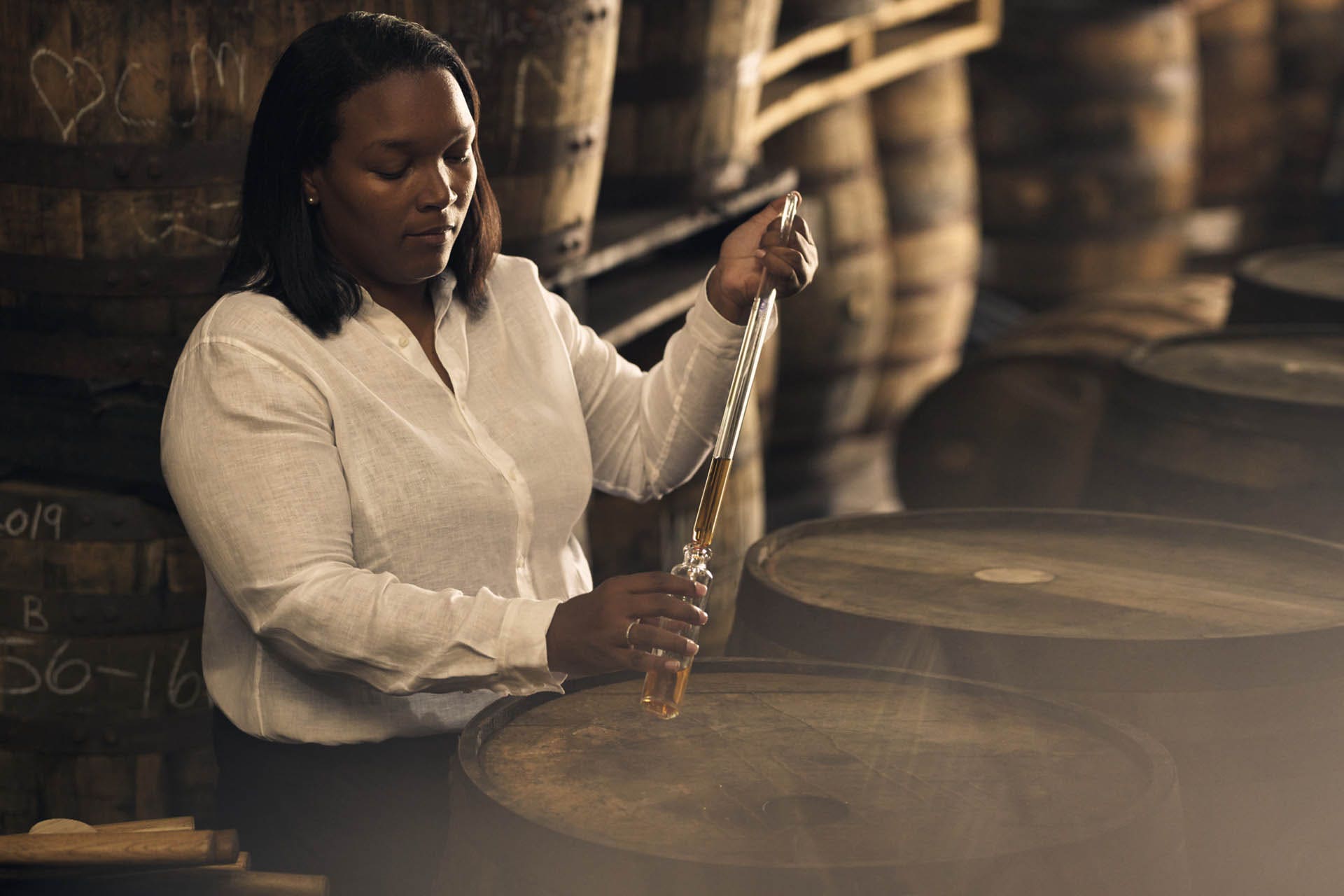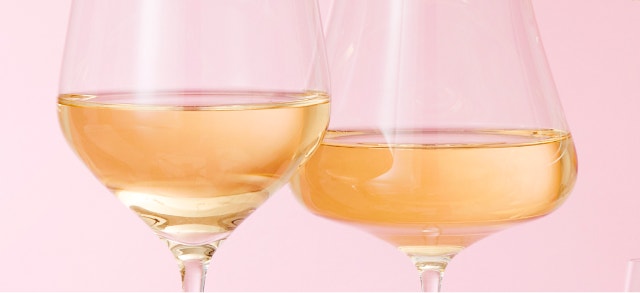Wine Enthusiast |
| What Are Chill Filtered-Spirits, And Why Does It Matter? Posted: 21 Jun 2021 05:00 AM PDT  Increasingly, producers tout whiskeys and other spirits as "non-chill filtered." But how does chill filtration affect spirits? Is it really an undesirable thing? What is chill filtration?As part of the distillation process, most spirits, and aged spirits in particular, are filtered to remove sediment or other unwanted particles. Chill filtration removes fatty acid esters (FAEs) and other chemical compounds that clump together to create a cloudiness or haze when a spirit is chilled. Flocculation, the technical term for that clumping, is sometimes referred to be experts as "floc." "All chill filtration means is whether the liquid is cold," says Bradford Lawrence, a rye whiskey specialist with Beam Suntory. He worked with the Old Overholt brand as its straight and bottled-in-bond rye expressions were switched to non-chill filtration last year. Rather than filter at room temperature, a spirit brought to the freezing temperature of water or lower causes FAEs to bind together. This makes the clumps larger and easier to filter out. The process yields a clearer, slightly lighter-bodied liquid. Not all spirits respond to chill filtration, however. Those bottled at 53.5% alcohol by volume (107 proof) or higher won't cloud at freezing temperatures, says Lawrence. As a result, many producers don't use chill filtration for cask-strength or overproof spirits. Chill filtration: pros and cons"Filtration in any form is not a bad thing," says Lawrence. "It's one of those levers that can be pulled in order to make a liquid how you want it to taste." He likens filtration to polishing a stone. "You're able to take this rough stone and polish it so other, more nuanced flavors have an opportunity to shine." Some distilleries employ both methods. They may use chill filtration on flagship bottlings, but skip it for special editions if a richer profile is desired. Though whiskey gets most of the attention when it comes to chill filtration, the non-chill filtered movement spans brandies, rums and even a handful of white spirits like gin. ProsMany experts say the big benefits of chill filtration are shelf stability, visual appeal and consistency. Some countries have specific requirements about clarity in spirits, so producers with global distribution may use chill filtration with those markets in mind. "Russia and Japan have strict rules around sedimentation," says Lawrence. "If you see [sediment], it causes issues. Chill filtration keeps that floc and haze out of the product and ensures that it visually looks good."  At Mount Gay Rum in Barbados, the core range of products employ chill filtration, while limited editions do not. "We chill-filter the core range to ensure consistency from bottle to bottle wherever you are in the world," says Trudiann Branker, the producer's master blender. "For Mount Gay, we have an already established mouthfeel across our core range, and for us, it's imperative that this remains consistent from master blender to master blender." ConsThose that opt against chill filtration say that forgoing the technique yields a more expressive, flavorful spirit. Jane Bowie, director of innovation at Maker's Mark, has been creating special editions of the Kentucky Bourbon that focus on qualities contributed typically by the casks. Not using chill filtration helps play up those qualities, she says. "Our first expression was all about the fruit and the heavy notes and the wood characteristics," says Bowie. "Filtration will rip out a lot of that stuff." To leave the larger fat molecules also results in a heavier, more viscous texture, she says. "The analogy I use is: I'm Southern. When my grandmother makes green beans with ham hocks, when it gets cold, you see all the fat [from] the ham hocks on the beans." Fat equals flavor, she says.  Distillers also liken the extra viscosity in such spirits to whole milk versus skim milk, or whiskey sours made using egg whites. "Texture matters more than you think," says Bowie. "It's just as important as the flavor. It's about the whole experience—the texture, the body, the finish." Branker says that spirits that don't employ chill filtration can be singularly flavorful. "Our limited-editions are meticulously designed to give the consumer and rum enthusiasts the essence of tasting our rum straight from the barrel," she says. These consumers are accustomed to spirits that don't use chill filtration and don't balk at sediment at the bottom of a bottle, or swirling around as rum is poured. "[They] almost prefer it." Why the "non-chill filtered" hype?To be clear, there's nothing wrong with chill-filtered spirits. But bottlings without chill filtration have cachet right now. Some experts say that it's a reflection of broader food and drink trends. "Like many other industries, people are looking for authenticity, be it farm-to-table dining or organic and biodynamic wines," says Branker. "It's clear that people are most interested in the provenance and terroir of a product, and sometimes that comes with a bit of extra sediment." In other words, the same demographic that loves natural wines, cloudy beers or rustic ciders is also likely to embrace floc in their whiskey. "People want things in their natural state," says Bowie. "We're not scared of ugly vegetables anymore or hazy IPAs. People want the purest, rawest form of whiskeys they can get." Some brands also avoid chill filtration as a way to tell a story. "There are brands wanting to have a historical nod, [to say a spirit is] rooted in an older process," says Lawrence. "From a marketing angle, it's something new and different, it differentiates the product on the shelf and creates intrigue." Still, some producers are baffled by the craze for haze. "In 70 years, we've never commented on filtration," says Bowie, of Maker's Mark. "We never used chill filtration, but we never talked about it because people didn't care. Now people care and talk about it. It's a badge of honor." |
| The Best Corkscrews and Wine Keys, According to Pros Posted: 21 Jun 2021 04:00 AM PDT  Finding a corkscrew or wine key that you vibe with can be difficult. What's the difference between the two tools? A corkscrew has two arms that lift and a top pull that twists, allowing leverage to help pull up the cork. A wine key, sometimes called a waiter's corkscrew, has a small knife and uses a metal fulcrum positioned on the lip of the bottle to create leverage to lift the cork up and out. A good wine key or corkscrew needs to be sharp enough to easily pierce through the cork, have a good grip and, above all, be easy to use. Often, poor quality corkscrews can damage corks, leaving little shards of wood in your glass, or can disintegrate your cork entirely, leaving you with little ability to open your wine. If you're in the market for a wine key or corkscrew, here are some that sommeliers swear by.  Pulltex Pulltap Black Cordoba"I am completely loyal to the Pulltex Pulltap Black Cordoba, which in my opinion is the best corkscrew in the market if you are looking for a traditional waiter's corkscrew," says Yannick Benjamin, sommelier and cofounder of Wine On Wheels, a group of wine professionals who raise money for charity. "This beautiful corkscrew has an elegant black horn handle that allows you to open up the wine in two steps because it has a double lever system that is made of stainless steel. It feels great in my hands, and I have never used any other corkscrew since I started using it in 2012." Pulltap Double-Hinged Corkscrew"We find Pulltap double-hinged corkscrews in our back pockets, the bottom of our bags [and] even in the cup holder of our car. Let’s just say—one is always available," says Caitlin Frame, co-owner of Sunny's Natural Wine Shop in Amesbury, Massachusetts. "For me, it also doubled as a fidget spinner when I had to talk to that particularly chatty customer." Coutale Waiter's Corkscrew"Our favorite wine key is a Coutale spring loaded, double lever waiter's corkscrew," says Rachel Pronovost, co-owner of Curio Coffee & Wine in Cambridge, Massachusetts. "We like that's it's fast, easy on the cork and gentle on the wrist. The foil cutter is pretty good, but we tend to just grip the bottle and yank off the capsule whenever we can."  Houdini Waiter's Corkscrew"When in service or while teaching a class, I flaunt some Dedalus swag by grabbing our branded two step waiter's corkscrew by Houdini," says Brittany Galbraith, wine director at Dedalus Wine Bar in Vermont. "This key's lightweight frame, short knife and agile two-step system makes it my easy-to grab, easy-to use tool to get to the important stuff: pouring delicious wines for our guests. Also, I love when they get broken in and the hinge gets a little loose. For more delicate corks, I reach for my beloved Ah So opener."  Laguiole W L’Essentiel Wine Key"I've worked with a lot of wine keys, some extremely expensive. One brand [the Laguiole World Sommelier Series], despite being beautiful and crafted with sustainable material with a long history of production, kept on breaking, and my wine keys from Code 38 kept on getting stolen," says Pascaline Lepeltier, partner at Racines NY and winemaker at chëpìka. "So I looked for a very affordable wine key with all the quality I needed. The Laguiole W L’Essentiel has a barely serrated long sharp blade that doesn't need to be sharpened for years. It also has a long screw in titanium for long corks and dense corks like Diams, a double edge and a good handle. It also has a great price and guarantee. We started to design some merchandising for chëpìka and this is the one we chose to customize. I would like it to be more sustainably made, though." Zwilling Waiter's Corkscrew"I've managed to collect wine keys during my wine career," says Margot Mazur, wine writer and educator at The Fizz. "They're everywhere, in the bottom of each tote bag, in my jacket pockets, sometimes ripping a hole from the pocket in the back of my jeans. Some of these wine keys last [and] some don't. But when I want to use something special, I reach for the wine key I purchased on a trip to Bordeaux in 2018 in the Bordeaux Tourist Office. It's hefty with some good weight, and has a very sharp screw, which is really important for a good wine tool. I love it so much, I even got it tattooed. The closest thing I can find is the Zwilling Waiter's Corkscrew—a bit pricier than some other options, but it'll be the one you'll reach for when special bottles come around." |
| You are subscribed to email updates from Wine Enthusiast. To stop receiving these emails, you may unsubscribe now. | Email delivery powered by Google |
| Google, 1600 Amphitheatre Parkway, Mountain View, CA 94043, United States | |

















0 comments:
Post a Comment